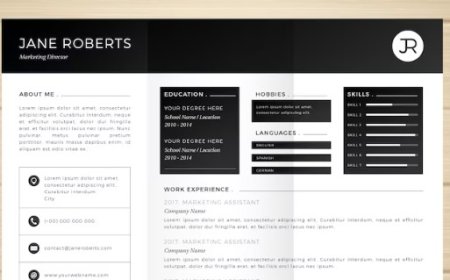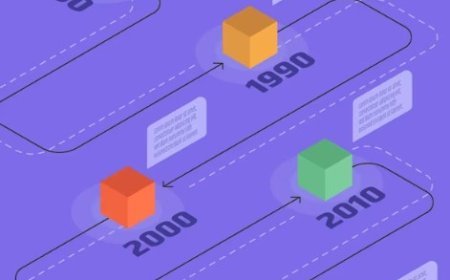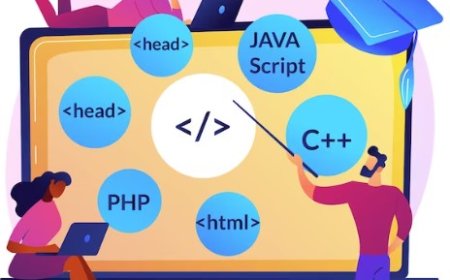Java Frameworks for Full Stack Development Analysis
Explore top Java frameworks for full-stack development through a comprehensive comparative analysis.

In the introduction of the comparative analysis on Java frameworks for full-stack development, we will begin by defining the concept and underscoring the significance of full-stack development. This will be followed by an exploration of the pivotal role that Java frameworks play in facilitating this comprehensive approach to software development. The aim is to provide a clear foundation for the subsequent comparative analysis of specific Java frameworks.
What is Full Stack Development?
Fullstack development involves working on both the frontend and backend of web applications. Frontend development deals with the user interface and user experience, focusing on creating a visually appealing and responsive web application. Backend development, on the other hand, handles the server side logic, database management, and overall functionality of the application.
Fullstack developers are responsible for managing the entire web development process, from designing the user interface to implementing server side functionalities. To streamline this process, developers often use frameworks that provide prebuilt components and tools for specific tasks.
Overview of Java Full Stack Frameworks
Java Full-stack Development: Java full-stack development encompasses both front-end and back-end development using Java technologies. It involves building robust applications that seamlessly integrate user interfaces with server-side logic, databases, and external services.
Selected Java Frameworks:
-
Spring Framework: The Spring Framework is a versatile and widely adopted Java framework. It offers a comprehensive suite of modules for various aspects of application development, including dependency injection, data access, security, and more. Its modularity and extensive community support make it a top choice for enterprise-level applications.
-
Java EE (Enterprise Edition): Java EE, now Jakarta EE, is a robust platform for building enterprise-scale applications. It provides a set of specifications and APIs for building distributed, multitiered, and secure applications. Java EE includes features for servlets, JSP, JPA, EJB, and more, making it a staple in large-scale business applications.
-
Play Framework: Play is a reactive web application framework that emphasizes both productivity and performance. It's known for its non-blocking I/O and stateless architecture, making it suitable for real-time applications. Play's convention-over-configuration approach and built-in support for web sockets and RESTful APIs make it a popular choice for modern web development.
-
Grails Framework: Grails is a Groovy-based, convention-over-configuration framework that leverages the Spring ecosystem. It simplifies the development of web applications by providing a high-level abstraction for common tasks. Grails embraces the Groovy language, offering seamless integration with Java libraries and providing features like ORM, scaffolding, and a rich plugin ecosystem.
These frameworks offer distinct advantages and cater to different types of projects and development preferences, allowing developers to choose the best fit for their specific requirements.
Comparative Analysis
Architecture and Design Philosophy:
-
Spring's Modular Approach: Spring follows a modular architecture, allowing developers to choose and integrate specific components as needed. It promotes flexibility and loose coupling.
-
Java EE's Enterprise Focus: Java EE, now Jakarta EE, primarily targets large-scale enterprise applications. It provides a comprehensive set of APIs and services for building robust, scalable systems.
-
Play's Reactive Model: Play Framework adopts a reactive, non-blocking design, ideal for high-concurrency applications. It emphasizes event-driven, responsive development.
-
Grails' Convention-over-Configuration: Grails prioritizes developer productivity by relying on conventions and sensible defaults. It streamlines the development process through convention-over-configuration principles.
Ease of Use and Learning Curve:
-
Spring has a steeper learning curve due to its extensive ecosystem and configuration options.
-
Java EE might be complex for beginners but offers simplicity for enterprise-scale projects.
-
Play Framework is relatively easy to learn, especially for developers familiar with reactive programming.
-
Grails is known for its simplicity and quick development, making it beginner-friendly.
Community Support and Ecosystem:
-
Spring boasts a large and active community, with a vast ecosystem of libraries and resources.
-
Jakarta EE has a strong presence in the enterprise world, with support from major vendors.
-
Play Framework's community is growing, and it benefits from the broader ecosystem of reactive technologies.
-
Grails has a dedicated community focused on rapid application development.
Performance and Scalability:
-
Spring's performance depends on configuration and component choices, offering good scalability options.
-
Java EE offers excellent scalability for enterprise-level applications but may have more overhead.
-
Play Framework's reactive architecture enables high scalability and low-latency responses.
-
Grails is well-suited for smaller to medium-sized applications with moderate scalability needs.
Security Features:
-
Spring provides robust security features with options like Spring Security.
-
Java EE offers security mechanisms for enterprise-grade security requirements.
-
Play Framework incorporates security best practices for reactive applications.
-
Grails provides security plugins and follows secure-by-default principles.
Database Integration and ORM:
-
Spring supports various data sources and ORM frameworks like Hibernate and JPA.
-
Java EE offers JPA for ORM and provides support for multiple databases.
-
Play Framework integrates smoothly with databases and supports reactive data access.
-
Grails comes with GORM, a powerful and easy-to-use ORM for seamless database integration.
Front-end Development Support:
-
Spring can be integrated with various front-end technologies but doesn't emphasize a particular one.
-
Java EE doesn't focus on front-end development; it's typically used with other frameworks for the UI.
-
Play Framework includes tools for building responsive, modern web interfaces.
-
Grails supports the Groovy-based GSP for simplified front-end development.
Third-Party Integrations:
-
Spring offers extensive integrations with third-party services and libraries.
-
Java EE has a wide range of third-party extensions for various functionalities.
-
Play Framework integrates well with reactive technologies and APIs.
-
Grails supports various third-party plugins for extending functionality.
Use Cases and Scenarios
The Spring Framework is an excellent choice when building complex, enterprise-level applications that require modularity and extensive customization. It's well-suited for projects where scalability, security, and robustness are top priorities. Spring's vast ecosystem provides solutions for various aspects of development, making it suitable for large teams and diverse projects.
Java EE, now known as Jakarta EE, shines in scenarios where you're developing enterprise-level applications with a strong focus on standards compliance and portability. It's a solid choice when building mission-critical systems, especially if you need to ensure compatibility with different application servers. Java EE's strengths lie in its support for distributed computing, transactions, and integration with legacy systems.
Play Framework is an ideal choice when you're developing real-time, reactive, or highly concurrent applications. It's well-suited for scenarios where low-latency and high-performance are critical, such as web applications that require instant updates or streaming services. Play's lightweight and non-blocking architecture make it suitable for modern, event-driven applications.
Grails Framework is a fantastic option when rapid development and convention-over-configuration are essential. It's ideal for startups and small to medium-sized projects where you want to minimize boilerplate code and focus on delivering features quickly. Grails' integration with Groovy and its seamless support for building RESTful APIs make it a great choice for web and API-centric applications.
Our comparative analysis of Java full-stack development frameworks highlights the diverse options available for developers. Each framework offers unique strengths and caters to different use cases. Spring excels in modularity and enterprise applications, while Java EE provides a robust solution for large-scale enterprise projects. Play's reactive model suits real-time applications, and Grails offers simplicity and convention-driven development. The choice ultimately depends on project requirements and developer preferences, but with this analysis, we hope to guide developers toward making informed decisions in their full-stack Java development journey.






























































